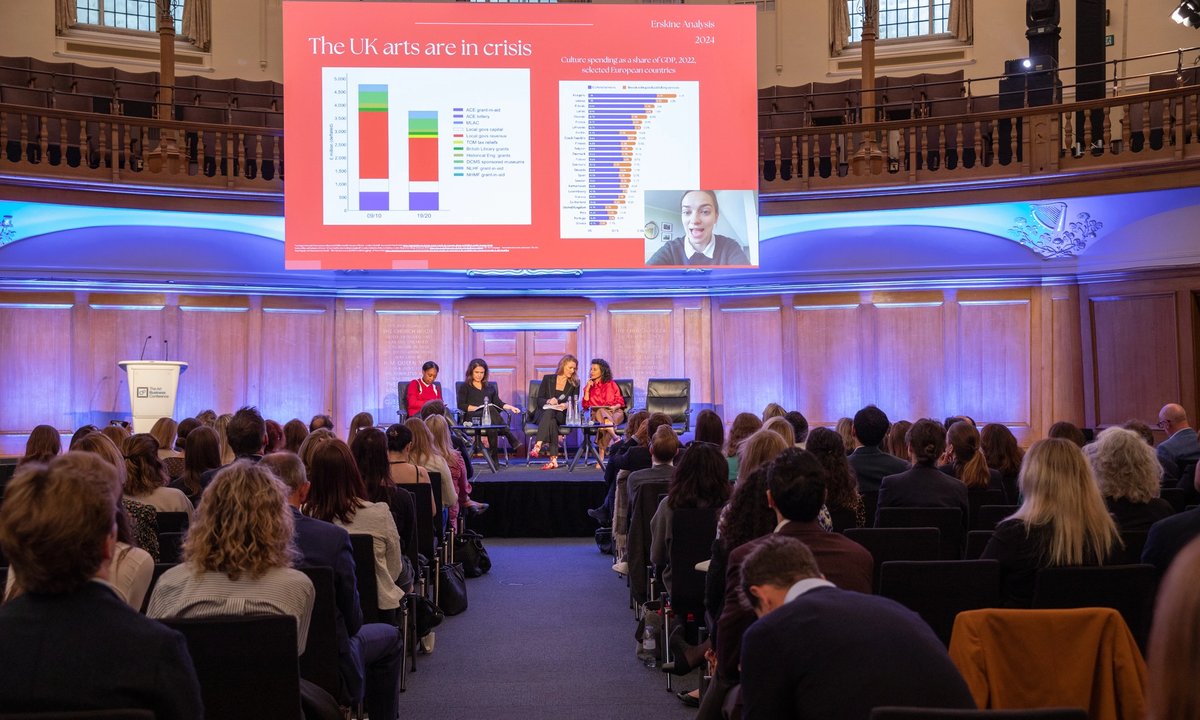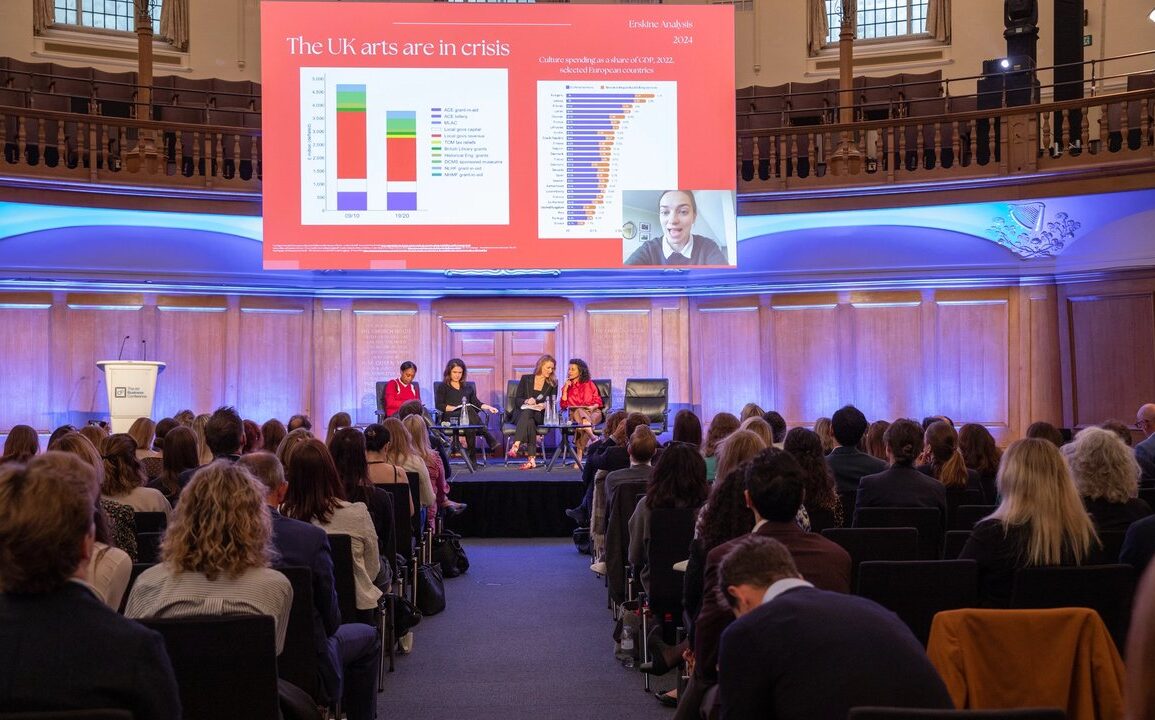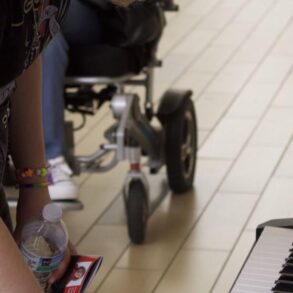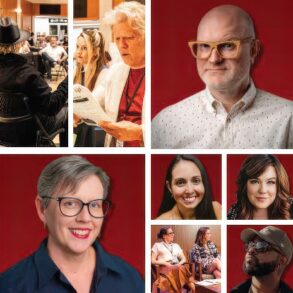
It was back to school for the UK art world this week at the annual Art Business Conference in London (10 September), which gathered some of the industry’s leading market specialists and professionals.
Gloomy statistics
Ahead of the meeting, Sotheby’s and Christie’s had released reports of auction sales plunging in the first half of 2024 by 25% and 22% respectively, leading to gloomy speculation for the rest of the year. Guillaume Cerutti, the chief executive of Christie’s, opened the conference by saying that the market’s downturn reflects the three “M”s: macro environmental factors, such as political instability; money factors, including high interest rates and low liquidity; and the mood, since sales of art are often pushed by desire and passion.
Yet despite the gloomy statistics, Cerutti offered glimmers of hope. He reported that while auction sales have dropped, the first half of 2024 had been Christie’s best six months for private sales. He added that particularly promising areas of growth for art sales could be found in Hong Kong and Saudi Arabia.
In response to the future state of the market, Cerutti noted that periods of decline in art sales in the past 20 years have never lasted more than two years and, therefore, he predicted a better art market in 2025. In a later panel Roman Kräussl, a professor of finance at London’s Bayes Business School, pointed out that continued geopolitical instability and the outcome of the US elections this November may prolong the economic downturn.
Is London v Paris “unhelpful infighting”?
Many of the panels throughout the day-long conference addressed the question of whether London was losing its position as a leading art market hub in favour of Paris. Since Brexit, the UK’s tax and import/export regulations with regards to art has made it a less desirable place to buy and sell works. In the talk “Building on the unique strengths of the UK art market”, the director general of the Society of London Art Dealers, Paul Hewitt, was keen to point out that the UK’s global share of the art market has remained stable in the past few years around 17% and in third position globally after the US and China. France, meanwhile, has stayed at 7%, in fourth position.
“In the UK, we often talk ourselves down a little bit,” Hewitt said, encouraging the media away from writing consistently negative reports about the art market. This idea of so-called ‘doom porn’, or gloomy reporting, was also referenced in Artnet’s recently released Intelligence Report Mid-Year Review 2024. Cerutti, who is French, argued that the London vs Paris dichotomy is unhelpful infighting, pointing to the fact that between 2010 and 2023, the value of sales at Christie’s grew 32% in the Americas and 22% in Asia but fell 6% in Europe, including the UK. “The figures show there is a bigger challenge: the question should be how can we work together to keep Europe at large at the centre. Collaboration is key,” he said.
New UK government
The conference’s discussions also focused on how the new Labour government could improve the UK art market. Many, including Hewitt, commented on how the change of leadership had brought a much needed new energy to the country. Both Martin Wilson, the chairman of the British Art Market Federation, and India Phillips, the managing director for the UK at Bonhams, said that changes to regulations, including a streamlined and proportionate application of the rules for smaller art businesses and alternative policies for temporary imports, would have a huge positive impact for the UK art market. Others argued that the government needs to address the funding crisis at British museums. Eliza Easton, the founder of the think-tank Erskine Analysis, presented on how the UK is far behind its European neighbours in terms of cultural spending. The curator and writer Fatos Üstek noted that the UK government could learn from the tax benefit policies that the US has for those who donate to charities, such as those in the arts.
Education, education, education
Arts education, which was a major topic at last year’s conference, was also addressed this year with a presentation from Toby Monk, the global recruitment and engagement director at Christie’s. Building on the apprenticeship programme at the auction house, Monk has worked with a cross-industry committee to create a new qualification titled ‘art market co-ordinator’.
The programme is pegged to the UK’s NVQ system and will allow students without A-levels or university degrees to gain education in the arts. The course will last 18 months and allow students to earn a salary alongside the qualification. The first cohort is expected to start the programme in September 2025. Additionally, the Courtauld Institute of Art director Mark Hallett announced during the conference the launch of the London school’s new MA programme in Art and Business, also starting in late 2025.
Potential for public philanthropy
The conference was closed with a fireside chat between Alison Cole, former editor of The Art Newspaper and now the arts and creative industries policy unit director at the Fabian Society think tank, and Chris Bryant, the new minister of state for the Department for Science, Innovation and Technology and the Department for Culture, Media and Sport.
Bryant argued that this double appointment for departments would allow for “culture and innovation to work together”. He added that funding for institutions “is going to be very very tough” but that, in terms of public philanthropy, he was keen to “get government ministers directly involved in trying to help people along in the process of giving to individual organisations”. He also welcomed the audience to reach out to him directly: “I want you to lobby for more money. These ears were made for lobbying. The more good ideas you put in my head, and the more creatively you do it, the more creatively I can put them to others […] I’m up for fighting as hard as I can.”
This post was originally published on this site be sure to check out more of their content








